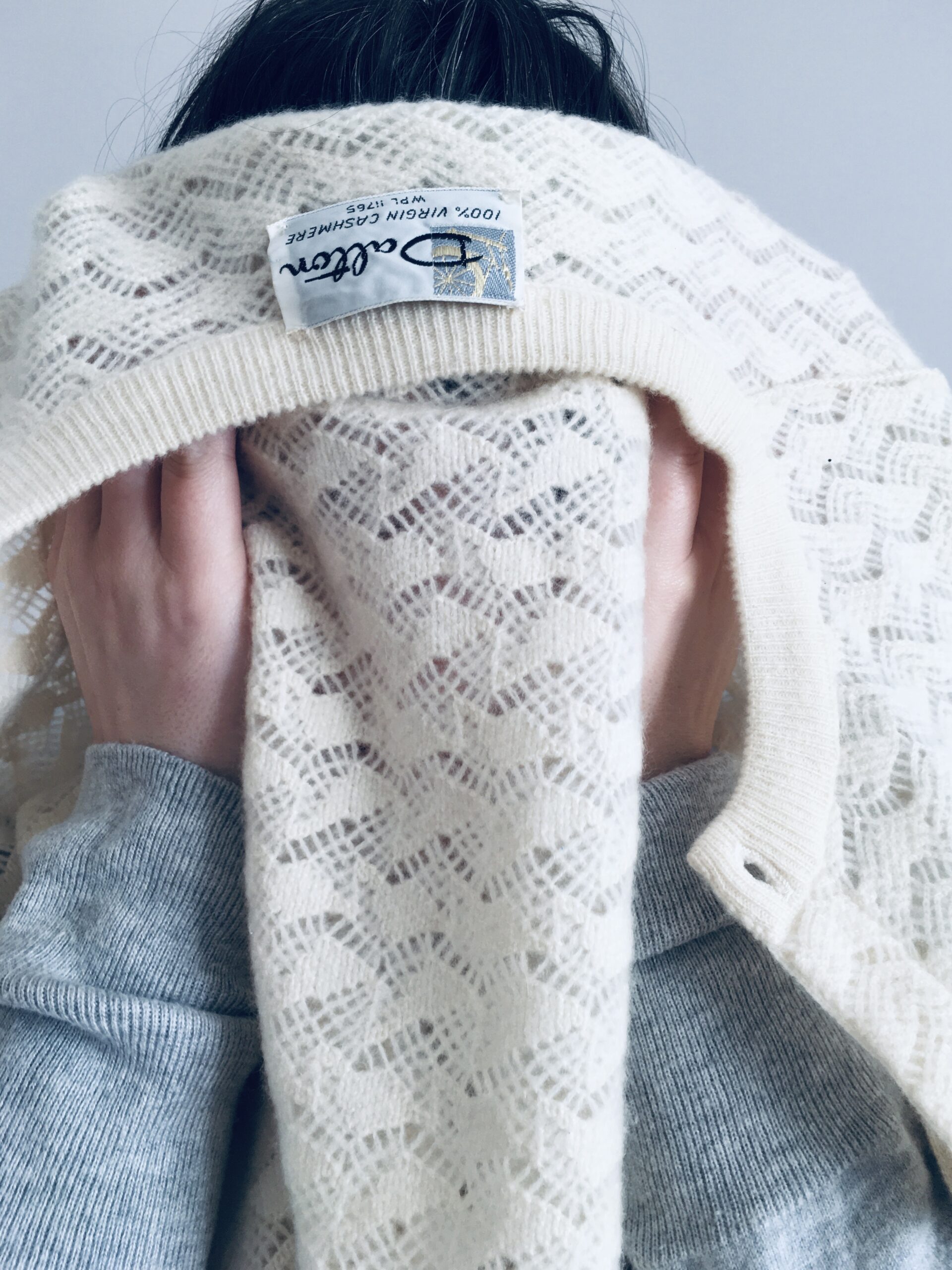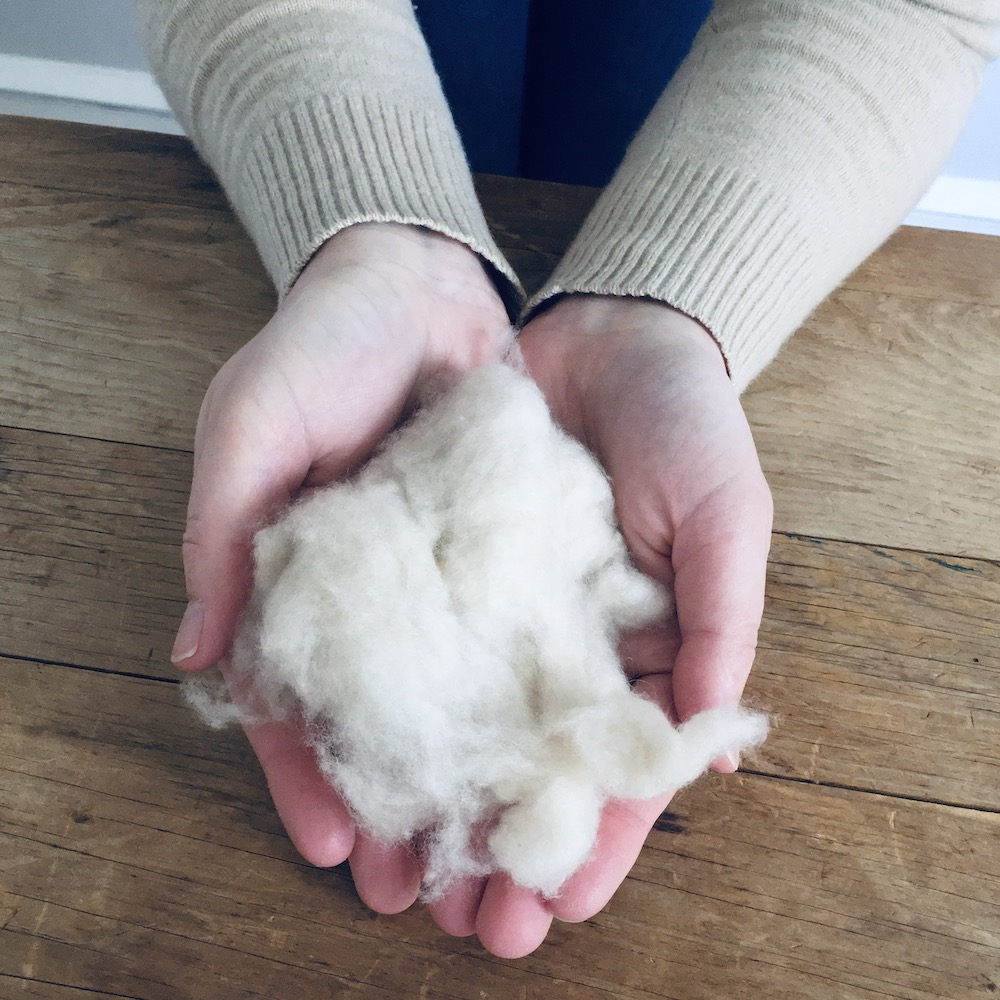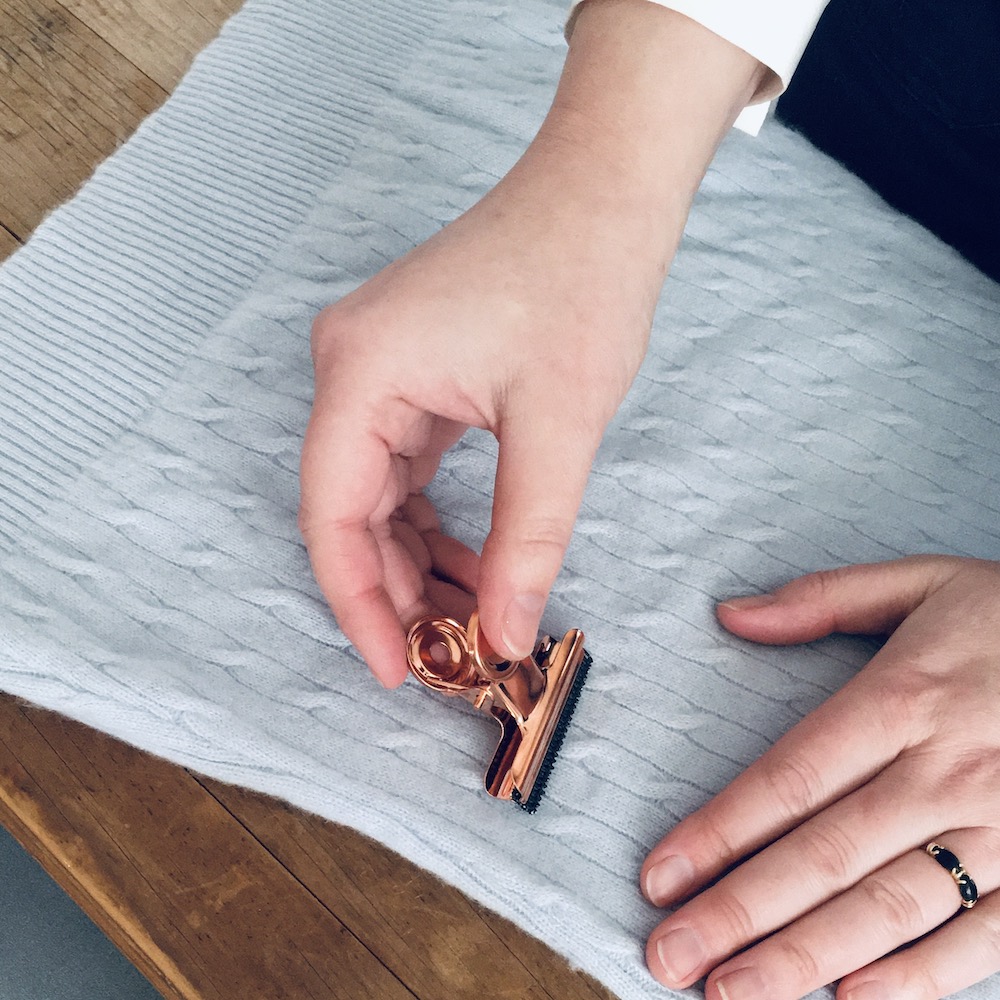
Just in time as we prepare our most cherished sweaters for summer storage, Southeastern New England Fibershed joins with textile sustainability pioneer Reed McLaren of The Sustainable Garment in the next installment of her series that seeks to uncover the long lost tools and practices that help us better care for the clothes we own.
While marveling at the embrace of a favorite cashmere sweater, I have often wondered—how is it possible something so fine and light can offer such unparalleled warmth?
It is hard to reconcile, until we consider the namesake animal in her environment:
As a cashmere goat scrambles across the rocky, high plateau of the Himalaya, she finds little shelter from the extraordinary cold. She pays no mind. She is perfectly warm, draped under a voluminous coat of hair, and yet somehow, not remotely weighed down. And it is a good thing, as there is very little to nibble on in this desolate landscape; preserving energy while staying light and nimble under her coat is crucial to her survival.
Over time, goats from this region produced hair so fine and insulating that they could not only withstand, but actually thrive, in these harsh conditions. And when humans caught sight of this miracle, pulling the fiber from the brush that the goat used to shed its coat in the warmer months, one of the finest fibers known to mankind was discovered.

The maintenance of cashmere and other fine woolen knitwear is my favorite subject matter and one that connects with many. Nearly everyone owns at least one cherished sweater, or dreams of owning one, but has been too afraid for fear of not knowing how to care for it. And with good reason. I have found countless fine sweaters while thrifting that were plagued by pills. Or worse, shrunken down to a size no longer fit for an adult. I wonder how disappointing it must have been for the owner to part with something precious when it no longer looked or fit as good as it did off the shelf.
Luckily, all of these problems can be easily remedied or avoided with just a little knowledge and practice.
It is important to understand that knitwear has a natural tendency to lift and separate in areas that are exposed to friction, referred to as pilling, and that the delicate nature of cashmere is especially prone. Regular maintenance is key. The sweater comb, a tool that few people know or recognize today, is designed with a mesh screen that is capable of removing those pills. When the technique of combing is applied with short, confident strokes across the entire garment, it has the added benefit of revitalizing the surface and coaxing out natural oils to recondition the fibers.

In my exploration, I have worked out the materials used in the construction of this tool and like to incorporate a DIY sweater comb in my workshops that participants can build and take home for a lifetime of usage, the mesh screen being easily sourced and replaced once exhausted.
Less is more when it comes to washing. Cashmere and fine woolens are capable of being worn countless times if allowed to air out after wearing, especially if a t-shirt or other undergarment is worn underneath. When it does come time to clean, thoughtful washing techniques will alleviate the chance of shrinkage through felting, the interlocking of woolen and hair fibers when water, agitation and heat are combined.
In my hand-washing demonstrations, I encourage folks to use a delicate, no-rinse wash like Eucalan. Eucalan cleans the garment effectively and safely by removing the need to rinse, which if done too aggressively can cause unintended damage. This special formulation also includes lanolin, which coats the fibers and restores the bloom, that gorgeous soft halo that we associate with cashmere fiber. This transformation is especially noticeable on a sweater that has been dry-cleaned, a harsh method which can crush the fiber and remove its natural oils. After I apply my washing technique to one of these sweaters and observe as the fibers open up and the halo is restored, I know that this miracle of nature is ready to provide its next gentle embrace.
Join me in my final article as we consider the needs of today’s universal wardrobe: Modern Athleisure.
Reed McLaren is available for consultations, workshops, presentations, and collaborations of all kinds via contact at reedmclaren@thesustainablegarment.com. Learn more about Reed by visiting The Sustainable Garment or follow her on instagram @thesustainablegarment.
